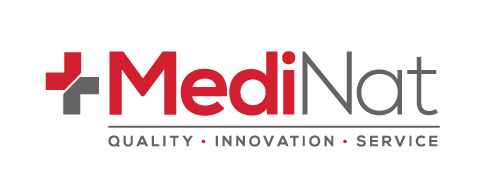
The 4 Types of Workplace Testing: Pre-Employment, Random, Post-Incident & For-Cause
Share
Drug and alcohol testing is an important component for a number of workplaces. Whether you work in a high-risk industry, such as manufacturing, construction, or mining, where the effects of drugs and alcohol can be catastrophic in impact, or you simply need to ensure all workers are compliant with corporate safety policy, you must use the right type of workplace testing.
The Importance of the Right Drug and Alcohol Testing
All types of workplace testing for drugs and alcohol are important in their own way; It’s not just about compliance by ticking the regulatory checkbox just so that you can move on.
Of course, non-compliance can risk legal challenges, reduce trust amongst your team and leave your organisation vulnerable, but ultimately for HR directors and business owners, the right workplace testing goes beyond that. It is about setting a standard and ensuring a strong safety culture to support your team’s wellbeing.
To that end, it is important to distinguish between the different types of workplace testing. To help you out, we’ve put together this guide to the four main types of drug and alcohol testing:
(1) Pre-employment;
(2) Random;
(3) Post-incident; and
(4) For-cause.
Why does Workplace Testing Matter?
Before we dive into the differences between the various alcohol and drug testing programs, let’s make sure we are aligned on what they have in common.
A well-designed workplace drug and alcohol testing program provides critical benefits — from reducing safety risks to strengthening compliance and culture:
1. Risk Mitigation
Early identification of a potential hazard and prevention of that hazard becoming manifest in the workplace can help prevent impairment-related incidents.
2. Employee Wellbeing
As briefly mentioned above, the promotion of a culture of accountability and safety, and consistency in its implementation, can improve your team’s wellbeing and lift their confidence.
3. Regulatory Compliance
Workplace testing must be compliant with external workplace safety legislation, industry-specific codes and internal corporate safety policies.
4. Responsibility and Accountability
A comprehensive workplace safety program ensures effective accountability and proper responsibility on behalf of your directors and team leaders.
Workplace Testing in the Modern Era
The modern workplace faces new, increasing and sharpened pressures. This can include complex work environments, heightened regulatory scrutiny, increased employer expectation, greater liability exposure and a general culture of greater moral and legal responsibility.
Drug and alcohol testing is just one, albeit an important one, piece of this puzzle. But it is critical to ensure as many incidents and safety breaches are prevented, productivity is maintained without the risk of absenteeism or reduced output, your brand and reputation isn’t damaged in the industry, and you avoid the significant legal and financial consequences that follow workplace incidents.
The Four Categories of Workplace Drug & Alcohol Testing
So, what are the four types of drug and alcohol testing? Let’s break them down one by one.
1. Pre-Employment Testing
The purpose of pre-employment testing is relatively unique as it does not focus on the prevention of current risks. Rather it acts as an initial filter for your company by giving you the opportunity to screen candidates for drugs or alcohol use before they join your workforce. This prevents potential hazards from entering into your organisation in the first place by identifying the risk at the hiring stage.
Benefits of Pre-Employment Testing
For some sectors, such as mining, transport and construction, pre-employment workplace testing is a regulatory requirement.
But there are other benefits as well. The most obvious advantage is that you minimise your liability. Drug and alcohol testing as part of the onboarding of individuals helps to nip potential safety or performance issues in the bud, before they manifest as a problem.
Moreover, it makes for a low cost way of setting an example and reinforcing your organisation's culture of zero-tolerance for substance use.
Best Practices of Pre-Employment Testing
- Make sure you are familiar with the legal frameworks relevant to your industry
- Always communicate the workplace testing requirements during the procurement and interview stages of recruitment
- Use accredited workplace testing products and services to ensure eligible results
- Ensure your candidates understand their rights and obligations during the testing process
- Keep thorough documentation of your onboarding process as well as practice of the policy to support compliance audits
2. Random Drug Testing
The random drug testing category is possibly one of the most well known types. It is used as a deterrent tool to discourage workers from substance misuse throughout their employment. By running a random drug testing program, your team will not be able to plan (and thus play) around the system, thereby reducing the level of misuse thanks to the unpredictability of the process.
Benefits of Random Testing
First and foremost, random drug and alcohol testing is a proactive form of risk management. Without waiting for an incident to occur and without having to wind the clock back to the pre-employment stage, random testing allows a consistent and non-discriminatory approach to workplace safety and regulatory compliance.
As with the other forms of testing, it also repeatedly reinforces the culture of wellbeing and safety, promoting ongoing vigilance and reinforcing the company values.
Best Practices of Random Testing
- Use software or programs to ensure impartial randomisation of your employees being tested.
- Always be clear and transparent about the random testing policy without disclosing the schedule of testing.
- Make sure you safeguard your team’s confidentiality at all times of the process.
- Keep careful documentation records in case you need them for audits or disputes.
- Provide support pathways, such as Employee Assistance Program referrals, in the event a workplace test comes up non-negative.
- Take into account your operational risks and adjust your randomised testing schedule accordingly.
3. Post-Incident Testing
Unfortunately, this is a category of workplace testing. It is generally triggered, according to policy, immediately after an incident such as a workplace accident, safety breach or near miss. The post-incident testing is designed to help determine whether impairment, as a result of substances such as drugs and alcohol, played a role.
Benefits of Post-Incident Testing
While post-incident testing happens after the fact, it’s still essential. It helps identify root causes, ensures accountability, and prevents similar incidents in the future. In some cases, it can effectively ensure that a drug or alcohol caused incident doesn’t happen again.
As with all aspects of workplace testing, there is certainly an element of regulatory protection as well. It is critical your organisation satisfies legal obligations to prevent penalties and minimise liabilities by showing swift, responsible management responses and a demonstrable commitment to ongoing improvement.
Best Practices of Post-Incident Testing
- Always conduct post-incident testing as soon as you can after an incident.
- Structure your incident reporting and investigation protocols to incorporate testing triggers.
- Respect the rights of your employees and union agreements when implementing the testing.
- Make sure your response teams are sufficiently trained in collection procedures and documentation.
- Always communicate your testing expectations in safety briefings and post-incident debriefings.
- Keep complete records of your compliance, policies and responses to incidents.
4. For-Cause Testing
For-cause testing is generally carried out as a result of specific and demonstrable evidence or observations that may indicate a possible impairment or infringement on your corporate safety policy. In some instances, for-cause testing can be called reasonable suspicion testing which encapsulates its objective.
Benefits of For-Cause Testing
For-cause testing can be as necessary as it is beneficial. It allows for a mechanism through which your HR directors can ensure immediate risk intervention on the grounds that an unsafe situation has presented itself and potential harm can be prevented.
Whilst unfortunate, for-cause testing can provide your organisation with the documentation it needs to legally support any disciplinary action you take as a result of the policy violation. And lastly, you are protecting your team by preventing them from being exposed - knowingly or otherwise - to a high risk environment.
Best Practices of For-Cause Testing
- Always train your supervisors and managers sufficiently so they can recognise the signs indicating reasonable suspicion.
- Use standardised observation forms to ensure consistency and impartiality in implementation.
- Make sure your staff are aware of the policy and that it is applied equitably.
- Always ensure confidentiality and respect your employees, even when there is reasonable suspicion.
- Work with your HR and legal teams and always ensure your documentation is for compliance audits.
- Set up channels for support and rehabilitation programs to ensure your employees’ well-being.
Building a Robust Corporate Drug & Alcohol Testing Policy
How can you go about putting together the right workplace safety and testing policy? Use this checklist when refining your program.
- Does each type of workplace testing you’re using have a clear definition, including triggers and processes?
- Have you communicated the policy and procedure to all team members, including contractors?
- Have you consulted with the right legal and HR representatives in your organisation?
- Does the policy align with your industry requirements and regulations?
- Have you incorporated adequate privacy and fairness principles into your workplace testing program?
- Have you built in schedule reviews to ensure continuous improvement and future-proofing of your policies?
At Medinat, we’re here to help
If you need assistance with workplace safety and drug and alcohol testing, make sure to teach out to the team here at Medinat.
We partner with organisations in several high-risk sectors to design and deliver comprehensive workplace testing programs through our accredited tester training and onsite testing services.
Our specialists are experienced at ensuring your workplace testing is compliant, effective and aligned with your safety policy, so you can get back to focusing on running your business.
Remember: drug and alcohol testing is not a tick-box exercise. It is an integral component of your risk mitigation strategies for the benefit of your people and your organisation.
